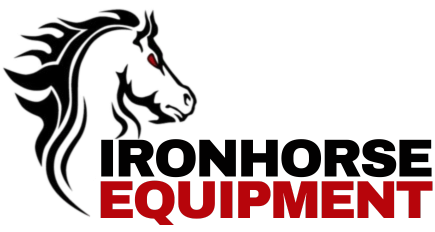Not all terrain is created equal—and your rubber tracks know it. Whether you’re navigating rocky slopes, soft mud, packed gravel, or manicured lawns, the surface beneath your track loader or mini excavator directly impacts traction, wear, and overall machine efficiency. Understanding how different environments affect rubber track performance helps you select the right tracks, reduce downtime, and extend track life. Here’s how to match your tracks to your terrain for maximum results.
1. Rocky, Uneven Ground: Choose Durability Over Softness
Rocks and rubble can shred soft rubber quickly. On harsh terrain:
Avoid basic-grade rubber tracks—they’ll chunk or split
✅ Use premium rubber tracks with reinforced steel cords and cut-resistant compounds
✅ Choose tracks with a low-profile tread to reduce the chance of tearing lugs
Always inspect your tracks after working in rocky areas for hidden cuts or sidewall damage.
️ 2. Muddy and Wet Conditions: Go Deep for Grip
Mud is notorious for causing slippage, spinning, and bogging down machines. In these conditions:
✅ Choose rubber tracks with deep, angled lug patterns for self-cleaning action
✅ Consider wider tracks to distribute weight and reduce sinking
✅ Clean tracks often—mud build-up adds weight and reduces performance
Poor traction in wet conditions isn’t just inefficient—it’s dangerous. The right tread keeps you moving.
3. Soft Ground and Turf: Flotation Is Key
Working on lawns, gardens, or freshly graded soil? You’ll need tracks that protect the surface:
✅ Opt for extra-wide rubber tracks to lower ground pressure
✅ Use smoother tread to avoid scarring turf
✅ Reduce sharp turns and high-speed maneuvers to prevent track marks
This is where rubber tracks shine over steel—they’re gentler, quieter, and leave a cleaner job site.
4. Hard Surfaces (Concrete, Asphalt): Tread for Stability, Not Grip
Hard, flat surfaces wear tracks quickly and require less aggressive tread:
✅ Use rubber tracks with flat or C-pattern tread
✅ Avoid deep lugs—they’ll just wear down faster
✅ Maintain proper tension—tight tracks reduce bouncing and slipping
Need to travel long distances on pavement? Consider switching to wear-resistant, smooth-profile tracks that are optimized for road travel.
⛰️ 5. Hills, Slopes, and Uneven Grades: Traction + Control
Working on inclines demands rubber tracks that can grip and stabilize without losing control.
✅ Chevron or zig-zag tread patterns offer directional grip
✅ Keep your tracks clean—slip increases with mud or oil buildup
✅ Don’t use worn tracks—they lose traction fast on inclines
Your tracks are your anchor. Make sure they’re up to the task when gravity’s working against you.
Conquer Any Terrain with Tracks from Ironhorse
Whatever surface your project throws at you, Ironhorse Heavy Equipment Parts has the right rubber tracks to help you power through it. We offer purpose-built solutions for all terrain types—because your job doesn’t stop for the weather, the slope, or the soil.
Call us today to get the ideal rubber tracks for your machine, your job site, and your terrain. Move smarter. Work harder. Last longer.

